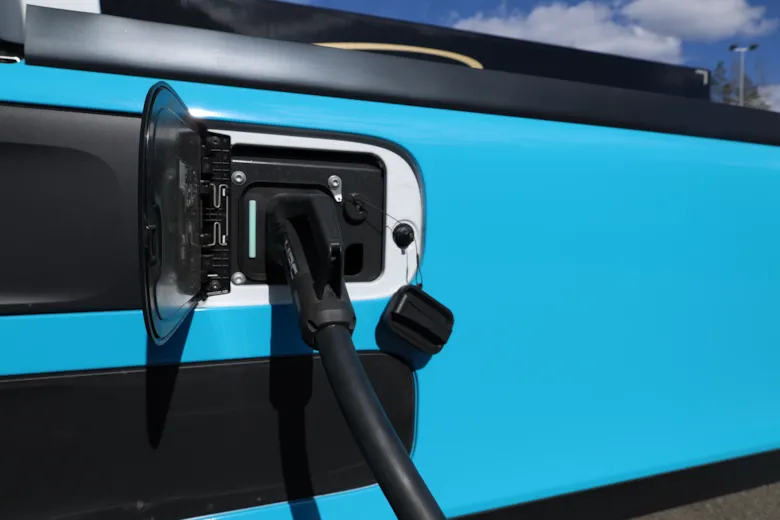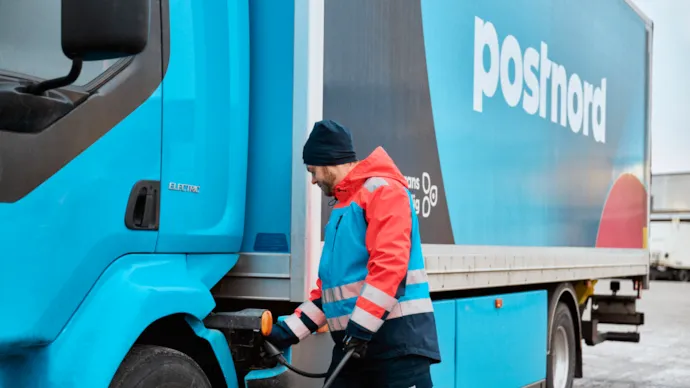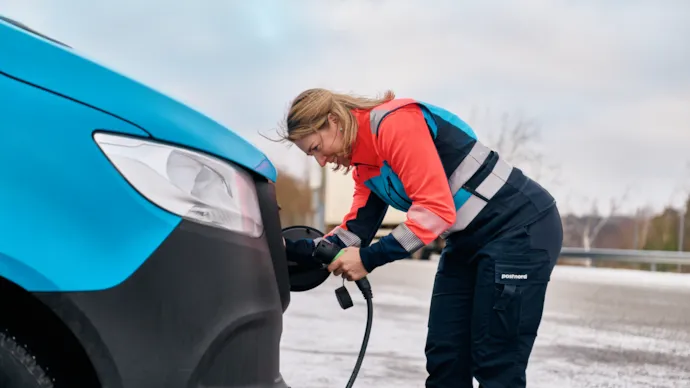New “super charger” powers PostNord Finland’s green transition
Electrification of the vehicle fleet is crucial to PostNord’s green transition, but without adequate charging infrastructure, the climate targets remain out of reach. The installation of the new fast charger in Finland marks a significant step in overcoming this challenge.
Located at the Vantaa terminal, this cutting-edge fast charging station represents a major milestone in PostNord’s commitment to sustainable logistics. Installed last year, the fast charger is powered by green electricity and designed for the specific needs of heavy-duty electric vehicles.
The charger is already being put to use, charging PostNord’s Finnish fleet of approximately 16 own and outsourced electric vans. Its full potential will be realized with the arrival of the first electric truck in March 2025. The charger makes it possible to charge an electric truck with 250–300 km of operational range in just one hour, ensuring these vehicles can be quickly charged and returned to service, even under demanding schedules.
“We expect to be able to drive over 700 km with the new electric truck,” says Ilmo Strömberg, Climate Lead at PostNord Finland. “Without the fast charger, that wouldn’t be possible.”


Fueling the transition
The new fast charger is part of PostNord’s wider strategy to transition the fleet and reduce carbon emissions. At the same time, PostNord is mitigating risks by incorporating renewable fuel options like HVO and biogas into operations, particularly for heavy-duty trucks.
For each electric truck that replaces a diesel vehicle, daily carbon emissions are reduced by approximately 500 kg. “When we have electric trucks, charging becomes an essential part of the strategy,” says Ilmo. “We have to plan a whole new operation, in a way.”
Beyond the environmental advantages, the fast charger strengthens the electric vehicle’s charging capabilities. Two charging docks provide a backup for the growing fleet of electric vans and are expected to come into play during Finland’s harsh winter months when battery performance can drop significantly. Fast charging during colder seasons will ensure uninterrupted service, keeping delivery times on track to meet customers’ expectations.
Lessons to be learned
Looking ahead, PostNord plans to scale fast charging infrastructure within Finland and throughout the Nordics. While owning fast chargers offers clear benefits, Ilmo notes that public chargers will also play a role. “When own chargers are not enough because of vast distances, we need to use public charging. Also, when you have your own charger, it’s always an investment. With public charging, the cost of electricity is higher, but there’s no investment cost.”
The results from Finland will serve as a blueprint for future Nordic expansion efforts, giving valuable insights that demonstrate the capabilities of electric trucks when paired with fast charging. And what’s more, says Ilmo, we are yet to scratch the surface of the technology’s potential.
“We are actively monitoring the fast charger market, where technology makes steady progress. As innovations emerge, we anticipate faster and more convenient charging for electric trucks. Each year brings exciting developments that boost our capabilities.”
Read more

Electrification of transportation & logistics
PostNord is moving toward our 2030 fossil-free target, with electrification playing a key role. However, a range of complexities means progress may not advance as quickly as one might hope.

Electrifying heavy transport: PostNord’s journey to fossil freedom
Heavy transport plays a central role in PostNord’s logistics and delivery operations. It makes it possible to move large quantities of goods over long distances, meeting the demands of both business and individual customers.

We manifest climate leadership
Climate change is one of the greatest challenges of our time. The transportation sector accounts for a major share of global greenhouse gas emissions. As a leading player in logistics in the Nordics, it’s up to us to take the lead in the industry’s climate transition.
